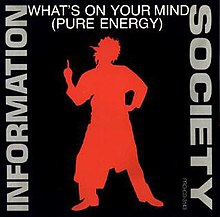
Posted on 07/21/2014 5:37:47 AM PDT by Citizen Zed
Unlike any other life on Earth, these extraordinary bacteria use energy in its purest form – they eat and breathe electrons – and they are everywhere.
STICK an electrode in the ground, pump electrons down it, and they will come: living cells that eat electricity. We have known bacteria to survive on a variety of energy sources, but none as weird as this. Think of Frankenstein's monster, brought to life by galvanic energy, except these "electric bacteria" are very real and are popping up all over the place.
(Excerpt) Read more at newscientist.com ...

New Scientist is not a credible for anything. Several months ago they published an article which claimed that humans were breathing too much oxygen. And we would all die as a result.
A ridiculous rag.

Right up their with Chaka Kahn...
Now let THAT one stick in your head this morning!
Forbidden Planet. Alta was H-O-T!
“There might be transfer of electromagnetic charge, but not necessarily mass transfer. Where mass transfer occurs, it is frequently associated with chemistry or even solid chemistry.”
So this e-microbe eats an electron. That would normally make said e-microbe more negative thus repelling it’s next snack. I suppose if the e-microbe’s biology included positrons, it could eat electrons and gain mass, but not much and only to the extent that it had positrons to spare.
And it still would require energy to run the process. Contrary to what the author might think, electrons are not energy.
Yeah the ‘science’ is so skewed that one suspects the author of the article is ‘science illiterate’.
If it can take in an electron at a higher energy state and excrete it at a lower energy state, charge balance is maintained.
It sounds like the organism lives as the electrolyte of a biologic battery.
Basically all organisms live by using the power of electrons in a higher state and excreting them in a lower state but the chemistry is occurring within the cell walls instead of outside.
This is a radical departure for bacteria. I would not be surprised if it were in another microorganism, not a bacteria, but belonging to its own domain of life, called Archaea, formerly known as “extremophiles”.
While they are microorganisms, they are actually closer to plants and animals (eukaryotes) than they are to bacteria.
http://en.wikipedia.org/wiki/Archaea
“Archaea use more energy sources than eukaryotes: these range from organic compounds such as sugars, to ammonia, metal ions or even hydrogen gas. Salt-tolerant archaea (the Haloarchaea) use sunlight as an energy source, and other species of archaea fix carbon; however, unlike plants and cyanobacteria, no species of archaea does both.”
“If it can take in an electron at a higher energy state and excrete it at a lower energy state, charge balance is maintained.”
That statement is true so long as your talking about an electron that is already there. But if you add an electron from an external source (ie; eat it), the charge balance would not be not maintained.
Picture a wire, electrons enter one end as they leave the other. If there is nowhere for the electrons to move to, they don’t enter the wire. Probably the same for the bugs.
Not too different from what the mitochondria are doing in your cells. They collect electrons from some chemicals and use those electrons to power the formation of ATP, the fuel that the rest of the cell uses for power. Those electrons end up attached to Oxygen, the electron waste bucket of the body.
Someone is getting real warm.
“Picture a wire, electrons enter one end as they leave the other. If there is nowhere for the electrons to move to, they don’t enter the wire. Probably the same for the bugs.”
Electrons drift in the wire until the electric field is neutralized. If the “wire” is a chunk of doped silicon, electrons can enter one end and exit the other, however energy has to be added in the form of light.
Think of the electrons as doing the “WAVE”. The “WAVE” travels much faster than the electron.
I’m more picturing a bucket brigade. The mitochondria have a series of proteins that hands the electron down the chain using a portion of the potential energy to do something. The first protein takes an electron and passes it down a chain, if the last guy quits taking buckets the whole chain stops.
I used the example of a wire because everybody is familiar with a wire. If you disconnect one end, the electron flow stops, same with a series of proteins that convert power from a flowing electron into useful chemical energy.
Electrons don’t flow in wires (small migration may occur, but not ionic conduction).
Electrical charge flows in wires.
Your Aluminum conductors in the high voltage lines don’t supply electrons to the copper conductors in your distribution system. We don’t see pileups of AlOxide or Copper Oxide on the buss bars. We observe electrical potential energy differences between buss bars.
Disclaimer: Opinions posted on Free Republic are those of the individual posters and do not necessarily represent the opinion of Free Republic or its management. All materials posted herein are protected by copyright law and the exemption for fair use of copyrighted works.